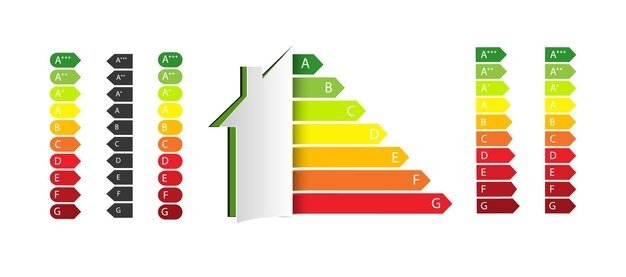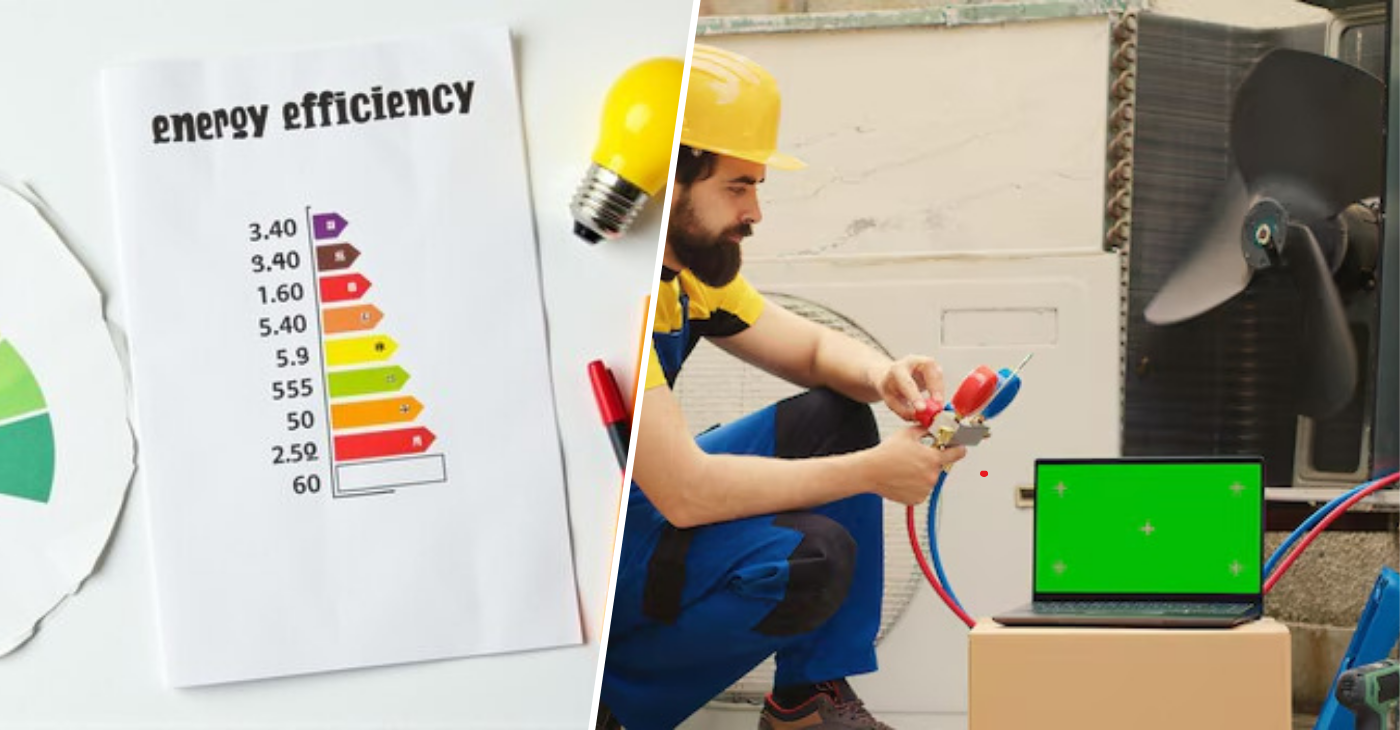IEER vs EER – Which rating matters more for your HVAC efficiency?
IEER vs EER are two key metrics for selecting energy-efficient HVAC systems. EER focuses on efficiency at full load, while IEER measures performance under varying load conditions. Both measure how well a system converts energy into cooling. However, they do so under different conditions. Understanding the differences between EER and IEER helps contractors select systems that perform efficiently for specific building needs. This article explains how these ratings work and why they matter in construction projects.
What are IEER and EER?
IEER vs EER helps determine which efficiency rating best fits your building’s cooling needs. In HVAC systems, selecting the right unit involves focusing on energy efficiency ratings. EER measures how efficiently a system cools at full capacity. It tests the performance of the unit when it’s running at maximum load. IEER vs EER comparisons guide HVAC professionals in selecting systems for fluctuating or stable cooling demands. EER is calculated under standard conditions, typically an outdoor temperature of 95°F and indoor conditions of 80°F with 50% humidity. This makes EER essential for buildings in hot climates where systems need to run at full load for extended periods, ensuring efficient energy use during peak demand.
On the other hand, IEER is a more comprehensive rating designed for systems that don’t always operate at full capacity. In construction projects like office buildings, malls, or multi-purpose facilities, HVAC systems frequently run at part loads. IEER measures efficiency across a range of load conditions-from 25% to 100%. It also accounts for different temperatures, which mirrors real-world usage. This makes IEER a more accurate measure of a system’s overall energy use throughout the year, reflecting the energy performance during daily fluctuations in demand.
How are these ratios calculated?
The calculations behind EER and IEER determine their importance in construction. EER is calculated by dividing the system’s cooling output (in BTUs) by the energy it uses (in watts) under specific conditions. This snapshot is useful for systems in predictable environments where outdoor conditions are stable and require consistent full-load operation.
IEER, however, provides a more detailed view by taking into account different operating loads (25%, 50%, 75%, and 100%) and varied outdoor conditions. The calculation of IEER produces a weighted average, allowing contractors to choose HVAC systems that can remain efficient, even when the building’s cooling demand fluctuates. For instance, office buildings that see high cooling needs during the day and much lower at night benefit from systems with a strong IEER rating.
Why do they matter in construction?
The choice between IEER vs EER affects not only a building’s energy efficiency but also its operational costs in the long run. EER is a straightforward metric that focuses on the system’s performance at full load under demanding conditions. This makes it ideal for buildings that require constant cooling, like data centers or facilities with steady energy needs. Here, knowing how the system will handle full-load conditions helps ensure that it won’t fail when pushed to its limit.
Many construction projects have HVAC systems that rarely run at full capacity all the time. In buildings like schools, offices, and mixed-use developments, the cooling load varies throughout the day. IEER becomes crucial in these scenarios. It provides insights into how a system will perform under partial loads, which means it’s optimized for both part-load and full-load operations. IEER helps gauge the system’s ability to handle fluctuating cooling demands, leading to more consistent energy savings over time.

How climate affects IEER vs EER
Climate is a key factor when deciding which rating IEER vs EER is more important for a particular project. In warmer climates, where high temperatures are common, EER is often more critical. Systems in these regions frequently operate at full capacity during peak summer months, and EER provides the needed benchmark to ensure the system performs efficiently under these stressful conditions.
In moderate climates or areas where temperatures fluctuate, IEER is more relevant. HVAC systems in these regions don’t always run at full capacity, so having a unit that performs well at partial loads becomes essential. Buildings in these climates will benefit from systems that can adjust to the varying demands without sacrificing energy efficiency.
When to focus on IEER?
IEER is important for buildings where the cooling demand changes throughout the day. In places like offices, shopping centers, or hotels, the number of people and equipment changes over time. This affects how much cooling is needed. IEER measures how well an HVAC system works during both low and high use. If the system only needs to work hard during part of the day, but not all the time, IEER will show how efficient it is under these conditions. This makes IEER a better choice for buildings where energy use needs to be lower when the demand for cooling isn’t constant.
When to focus on EER?
EER is more important in places with consistent hot temperatures where the HVAC system has to run at full power all the time. For example, in hot climates like deserts, the temperature stays high throughout the day. Buildings in these areas, like factories or data centers, need their cooling systems to run at full capacity to keep things cool. EER shows how efficient a system is when it’s working at its maximum capacity all the time. If the building is in a place where the temperature doesn’t change much, focusing on EER will ensure that the system can handle the full demand efficiently.
How climate affects IEER vs EER importance
The climate where a building is located affects whether you should focus on IEER vs EER. In places with mild weather that changes often, IEER is more useful because it shows how well a system works under different conditions. In these climates, cooling needs might go up and down throughout the day. On the other hand, in hot areas where temperatures stay high, EER is more important. In these cases, the system needs to work at full power most of the time. EER helps you see how efficiently the system will handle continuous, heavy use.

Which rating saves more energy?
IEER usually saves more energy in buildings where cooling needs change throughout the day. For example, in schools or mixed-use buildings, the cooling demand might be high during the day and lower at night. IEER measures how well the system works during both busy and slow periods, so it helps save energy when the system doesn’t need to work as hard.
EER is more energy-efficient in buildings where the system needs to work at full power all the time. For example, in data centers or industrial plants in hot climates, the cooling system is always running at full capacity. In these cases, focusing on EER ensures the system uses less energy while operating under constant demand. Picking the right rating can lead to big savings on energy bills in the long run.
How these ratings impact HVAC costs in construction
For any construction project, the initial investment in HVAC systems is a major consideration. However, the lifecycle cost of operating these systems often outweighs the initial expense. Systems with higher IEER ratings typically come with a higher upfront cost, but their ability to operate efficiently under partial load conditions leads to significant savings on energy bills over time. On the other hand, systems focused on EER may be less expensive initially, but they could lead to higher operational costs if the system isn’t optimized for fluctuating demands.
Choosing the right system for your building
When planning HVAC systems for a construction project, it’s important to understand the anticipated usage of the building. For commercial properties with varying occupancy levels and cooling needs, IEER is the superior metric to focus on. It ensures that the system will remain energy efficient throughout the day, even when the building isn’t at full capacity. For data centers or industrial plants with steady energy demands, a higher EER might offer a better indication of the system’s performance under constant load conditions.
Industry trends in HVAC efficiency ratings
Regulations and standards in the construction industry are pushing for higher IEER ratings, as buildings are increasingly required to meet stringent energy consumption goals. Contractors need to keep these trends in mind when selecting HVAC systems. Choosing units with a high IEER not only ensures compliance with regulations but also enhances the long-term value of the building by reducing operational costs. This shift towards energy-efficient systems is part of the broader effort to reduce carbon emissions and improve overall building sustainability.
Final thoughts on IEER vs EER in HVAC systems
IEER vs EER are key to understanding HVAC efficiency. EER is vital for systems running at full load in stable climates. IEER is more comprehensive for buildings with varying cooling demands. Both ratings are important to make informed choices. By focusing on these metrics, construction professionals can ensure that systems are energy-efficient and cost-effective. This balance helps improve long-term sustainability while meeting modern energy standards. Read more about HVAC questions and answers.







